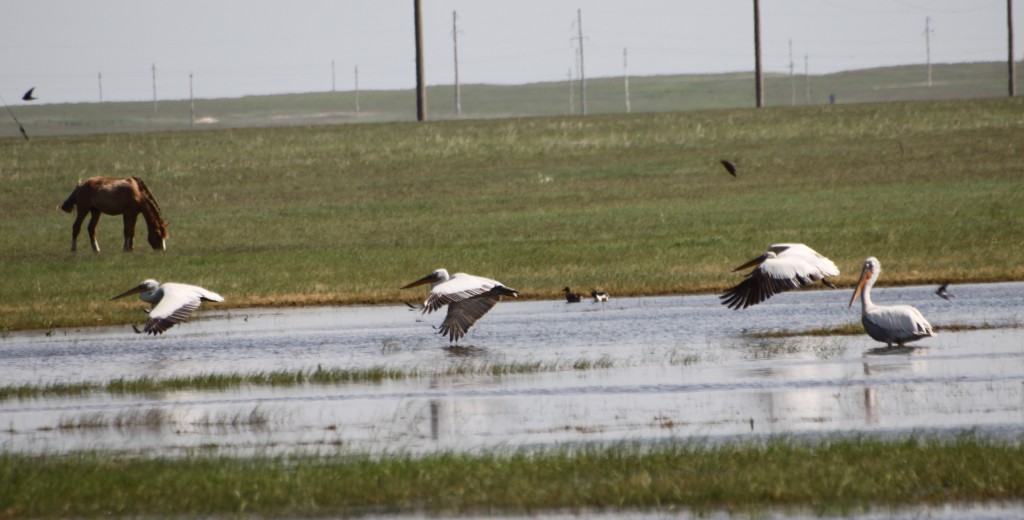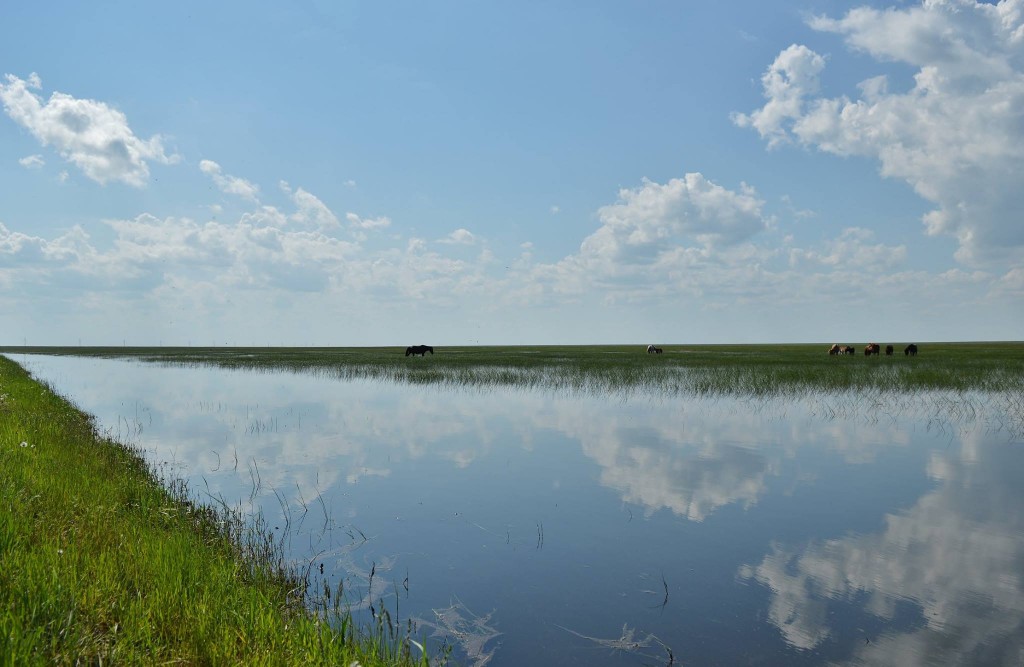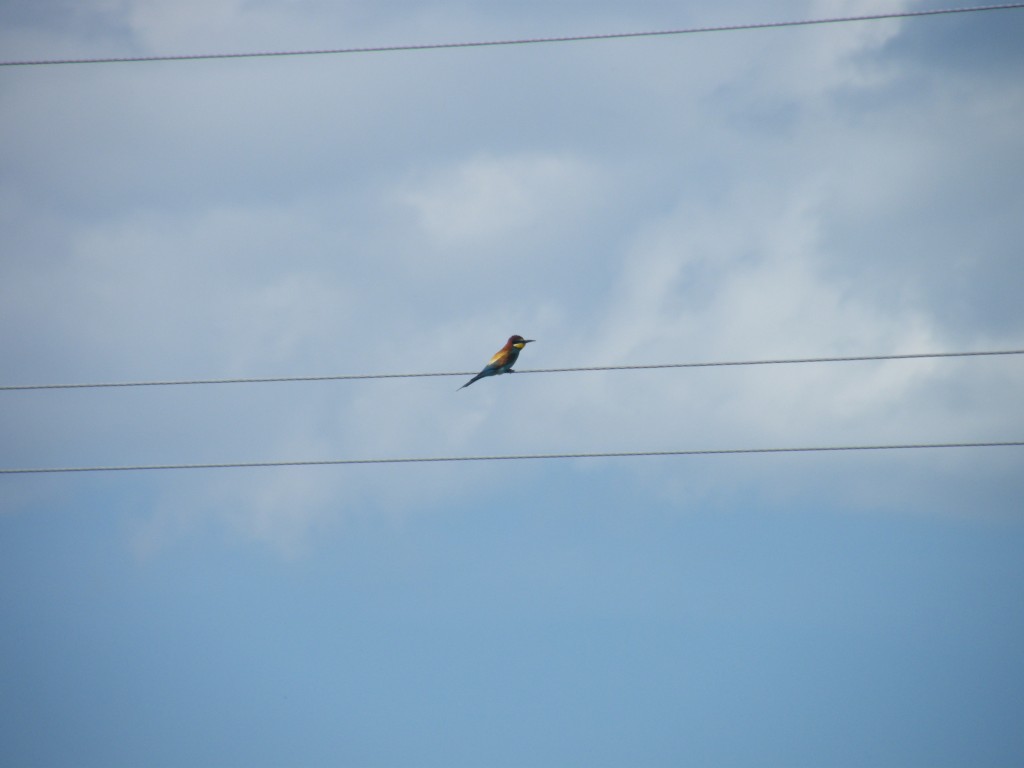ASTANA – In the spring, when the weather warms and residents of the steppe start to dream about summer holidays by some distant seaside, another group of travellers is making a journey in the opposite direction. Only about 120 kilometres west from Astana, hundreds of birds, many from tropical beaches, come to rest, mate and lay their eggs in the Korgalzhyn State Nature Reserve.
May is when things get funky in Korgalzhyn. “Millions of birds are crossing this area and some of them stay for nesting,” Vera Voronova, tourism manager with the Association for Biodiversity Conservation in Kazakhstan, told The Astana Times. Voronova guides wildlife and birdwatching expeditions in the reserve. “May is also start of breeding season, [so] birds have very bright plumage and behave very actively, trying to find a partner.” This is the easiest and best time for birdwatching, she said. On a two-day trip, it’s not unusual to spot 70 species of birds; on this reporter’s trip on May 30-31, 57 species were spotted.
The highlight of the May nesting season, for most birdwatchers, are the pink flamingos. Kazakhstan is home to the world’s northernmost breeding colony of the flamboyant, pink creatures. Towering on their long legs over pelicans, gulls, terns and other seabirds in the middle of a landlocked steppe that can see temperatures fall to minus 50 C in the winter, it can look as though quite a number of animals have taken a very, very wrong turn.
But they’re in the right place. Kazakhstan’s flamingos fly north from inland lakes and coastal areas in Africa and the Middle East, meeting other species that have come from parts of India and Europe. They mate, lay their eggs and raise their chicks communally in a few short months before beginning their long journey south again.
Despite their bright colours, finding the birds can take some effort. The reserve is huge and the lakes broad and shallow, and the birds don’t necessarily hang around on the shores. Flamingo hunting involves long stretches of off-roading across the steppe with a guide looking for nearly invisible signs of life. The longer you spend in the reserve, the more likely you are to find what you’re looking for. The ACBK organises trips of one, two or three days, usually. “Two to three days are more than enough to see most of the birds of the area, if the weather is good,” Voronova said.
Though spring is the best season for birdwatching, the ACBK runs tours all summer and into autumn as well. They also organise a few events per year on International Bird Day, International Birdwatching Day, International Migration Day and other significant occasions.
“I love leading groups, especially with people who weren’t interested in birds before. I really like to open their eyes and show how big and diverse the world of birds is. Most people become birdwatchers after our trips,” Voronova said.
Ambassador of the Czech Republic to Kazakhstan Eliska Zigova, who visited the reserve at the end of May, might be one of Voronova’s newest converts. “I was very surprised at how exciting birdwatching can be! It was my first time and I had always thought that [birdwatching] must be a bit boring and interesting only for ornithologists,” she told The Astana Times. “But it was just the contrary!”
Korgalzhyn, Kazakhstan’s oldest and largest nature reserve, is one of the country’s biodiversity hotspots and, along with the Naurzum State Nature Reserve, has been inscribed on the UNESCO World Heritage list as the Saryarka steppe and lake network. According to UNESCO, the lakes there provide feeding grounds for up to 15-16 million birds, including threatened bird species like the Siberian white crane, the Dalmatian pelican, Palla’s fish eagle and more, as well as the critically endangered saiga antelope. It contains more than 200,000 hectares of Central Asian steppe, more than half of which is pristine, and shelters marmots, ground squirrels, wolves and foxes.
Many Korgalzhyn tours include a trip to the local museum about the reserve, where a short video notes that Korgalzhyn has no trees. No trees – just flat steppe and flat water, meeting the sky. But this is not to say the reserve is boring; rather, the landscape is full of smells and sounds and textures. Grasses and red poppies sway with the breeze, while smaller, bushier plants like asters and tulips remain still. The sharp, medicinal scent of wormwood rises up with every step, joining the smells of what looks like wild dill and thyme. Dragonflies dart, birds warn each other of approaching figures, marmots bark to their communities from a distance. There is a constant flurry of activity in the sliver of space between the still sky and the still steppe.
“The sheer size of Kazakhstan and the emptiness of the steppe have created great potential for the development of relatively undisturbed ecosystems,” Mike Ratty, who also visited Korgalzhyn on May 30-31, told The Astana Times. Ratty is a professor at Nazarbayev University. “Korgalzhyn goes further, and restricting the entry has created a remarkable protected environment – and all we saw were the edges; how much more is waiting in the interior?”
Ratty, a birdwatcher of many years, said the variety of flora, swarms of insects and large numbers of birds of prey all point to a healthy ecosystem – which is important, as Korgalzhyn is an essential part of several massive migration routes.
“[Korgalzhyn] is important on global scale, as some countries, for example in the Jordan Valley, are using up water, and wetlands for migrating birds are lost. It is to Kazakhstan’s credit that it has established this reserve, and should be a part of a broader programme to repair damage wrought by Soviet-era mismanagement of natural resources,” he said.
Tour accommodations can be provided in small cabins at the edge of the reserve, or, as on his trip, in a homestay in the nearby village of Korgalzhyn.
“The welcome [and the home-churned butter, fresh-baked bread and homemade jam] in the slightly shabby village is a highlight of my time in Kazakhstan,” Ratty said.



